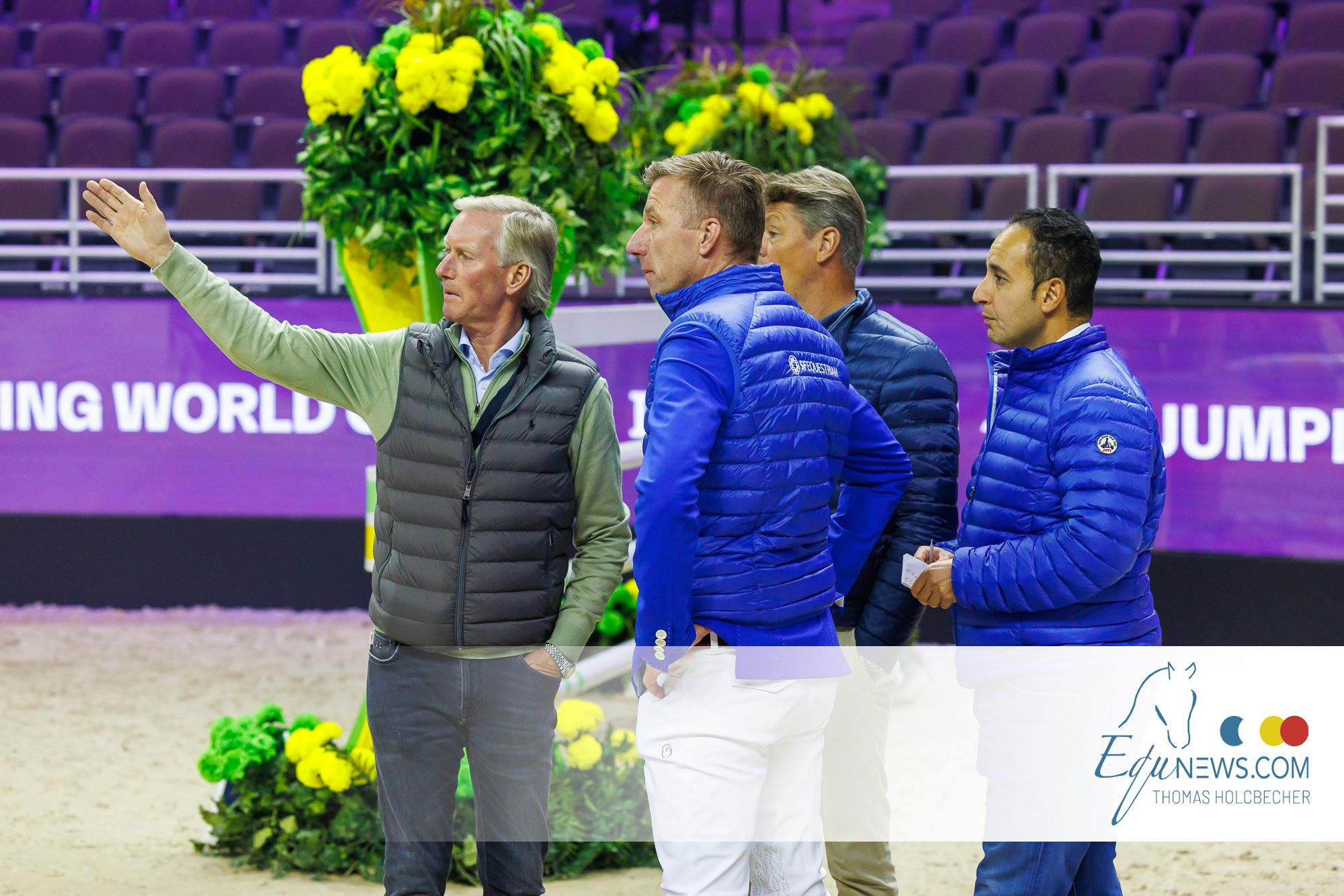Before the action starts, the riders walk their course walk on foor. They check out the track and make an individual plan for how they want to compete it! But what factors do they take into account? Stride counts are important, but there's much more to consider!
Advanced Jumping competitors have learned to approach a course as one entity before examining each component. Experienced course designers, like the ones who work on the Longines FEI Jumping World Cup™ and the Longines FEI Jumping Nations Cup™, see all the jumps as connected.
Sometimes a course designer will have a signature problem that they like to present. At the uppermost levels of Jumping, the course will be technically doable for everyone on the start list but still challenging for those who are likely to finish on or near the podium. The key to ending up in the latter category is to try to get a bit of perspective on the whole course and see what’s being asked.
This is also the time when athletes remind themselves why they are competing in that particular event. Of course, everyone wants to win, but realistically sometimes a greener horse means putting risk aside and getting the horse safely around the course as cleanly as possible for a good experience.
Break the Course Into Sections
Next, athletes break down the course into segments of different lines that require various skills. Where does a particular line start and end? Each line might have its own problem posed for the athlete. Also, one line may serve as a foundation for the next. What is being set up with that part of the course?
Establish Success from the First Jump
The first jump is important because it sets the tone for the rest of the course. Elite Jumping athletes look for several things here. First, they want to make sure where the beam that starts the timer is located because that’s when the clock starts ticking on their ride. Also, they plan an approach to the first jump that puts them on the desired lead, gives them the best angle into the first line, and establishes the rhythm they want with the horse.
Analyse Bending Lines, Turns, and Rollbacks
Stride counts become less clear cut when lines aren’t straight. When the path between jumps is curved, the athlete has to figure out where they want to hit the second obstacle. Do they want to clear it at the midpoint of the jump, or are they looking still one jump further and thinking about taking it closer to the standard and perhaps at an angle to continue a bending line?
Curves and turns are often where Jumping competitions are won and lost, especially in the jump off round. With every curved line, there are typically three choices for the athlete: 1) the longest, most weeping way around; 2) the shortest, most economical path, which may involve cutting strides and taking some risk; and 3) a line in between those two.
Which way is best for the horse, given its preferred turning direction and stride length? If a line is cut extremely tight, like on a rollback, will the horse be able to visually lock onto the next jump in time? Not seeing the obstacle until it’s too late can result in getting too deep (being almost on top of the jump with not enough takeoff room) or having a refusal when the jump comes up too fast for the horse to clear. The horse’s size, power, and scope, plus its experience, all factor into how an athlete approaches these lines.
Understand What the Horse Sees at Each Jump
Each horse is unique when it comes to what makes it spook or need extra reassurance from its rider. A major part of the course walk analysis is anticipating what might give an athlete’s mount a fright, like a solid wall that can’t be seen through or an unusual standard decorated with flowers or sponsor imagery.Other potentially frightening or distracting things on the course that athletes look out for include:
- Water jumps and liverpools with reflections
- Banners and buntings that move in the breeze
- The location of the in and out gates
- Where the course runs close to the audience
- Sunlight, artificial stadium light, and shadows
Some jumps seem to blend into the ground (like the devilish black plank on Day 2 of the recent Longines FEI Jumping World Cup™ Finals at Omaha). Striped rails are generally easier for horses to see, whilst solid pastels are more challenging. However, these differences in colour, shape, and pattern are helpful for the athlete in memorising the order of the course.
source: FEI



